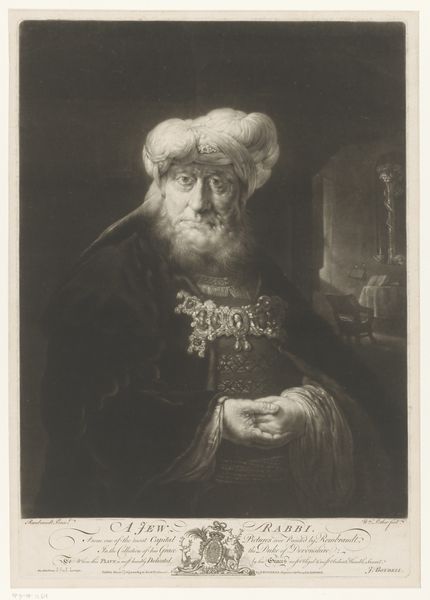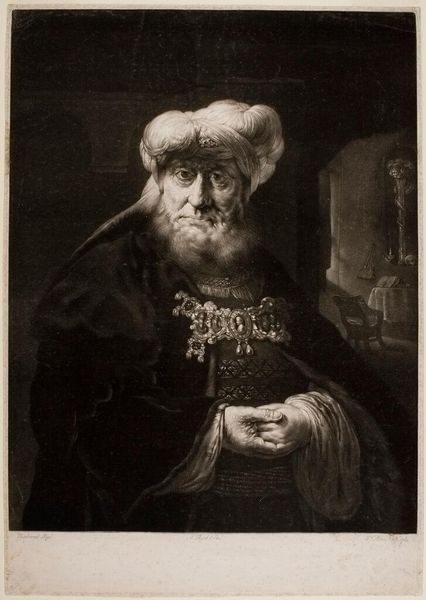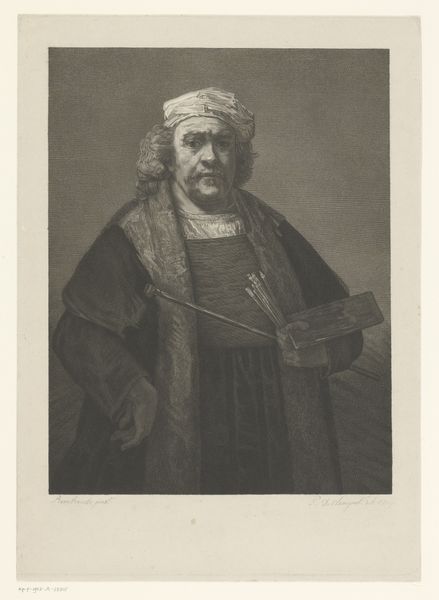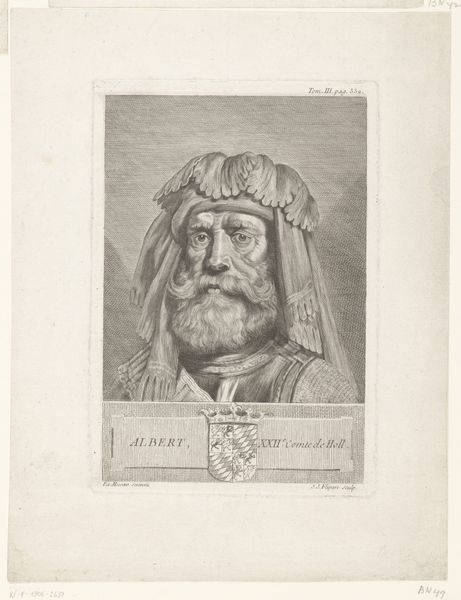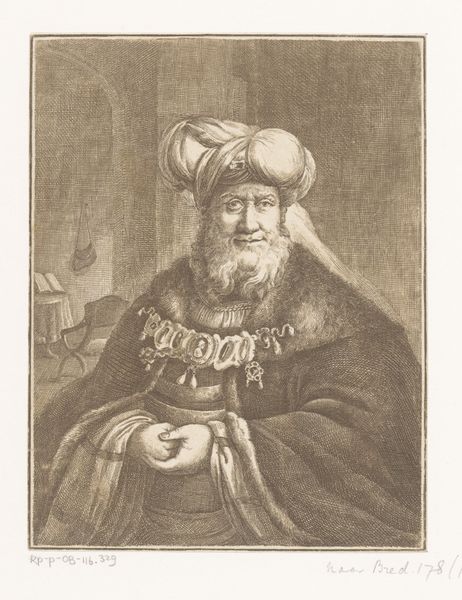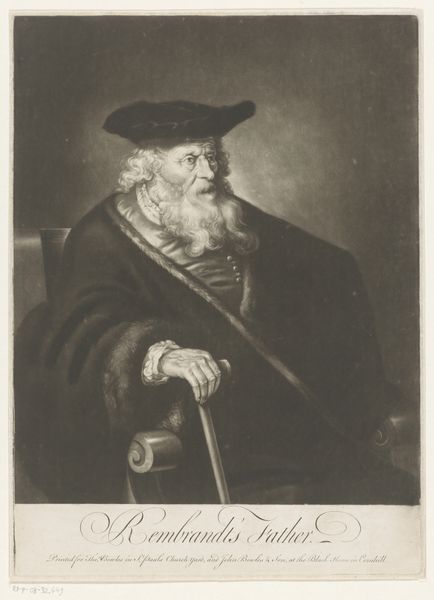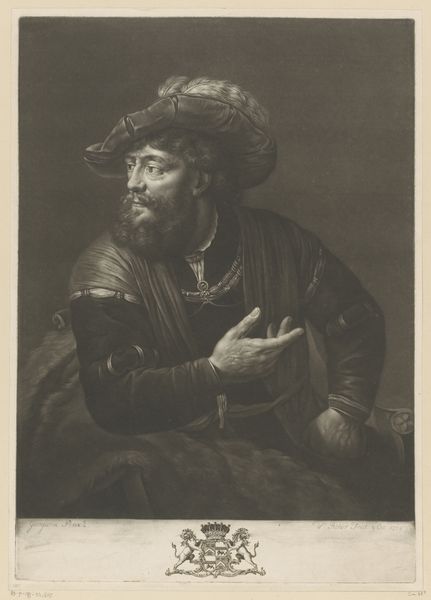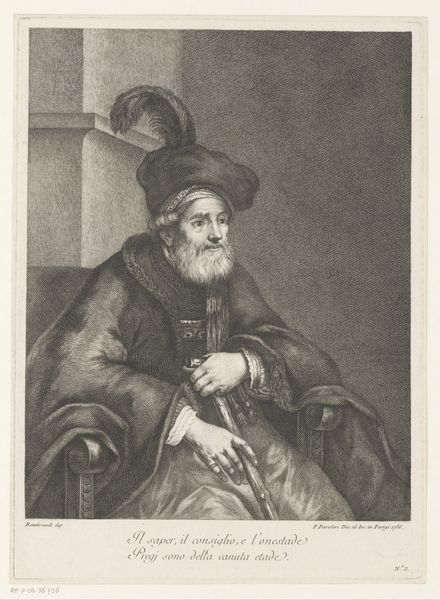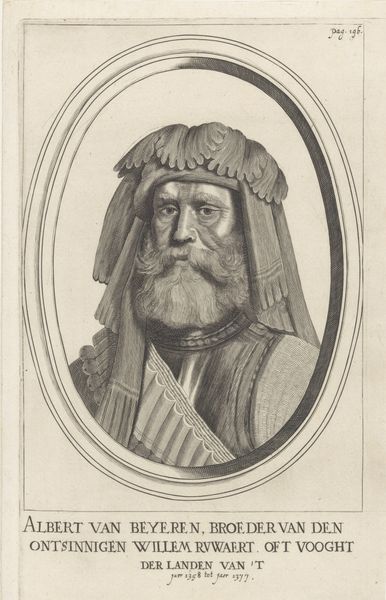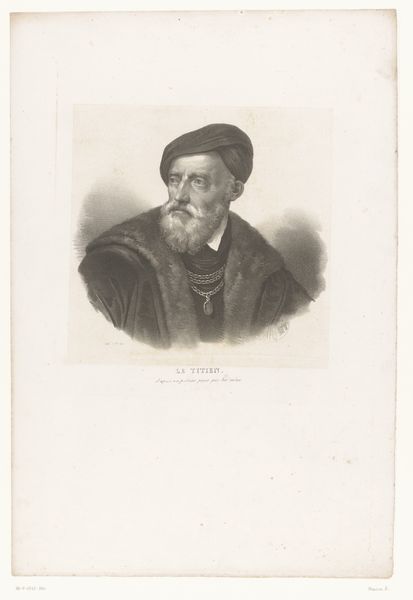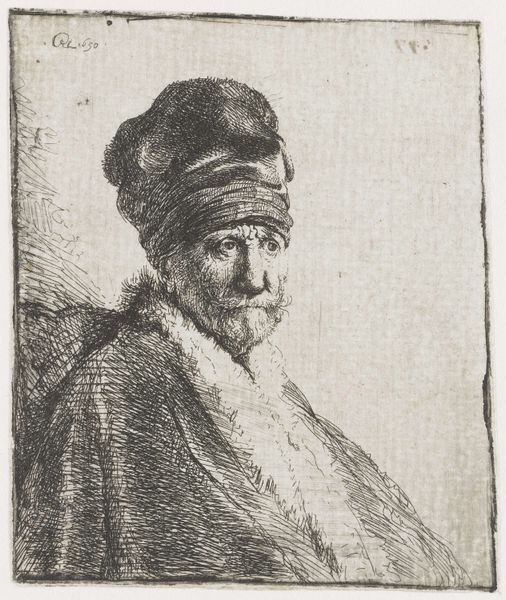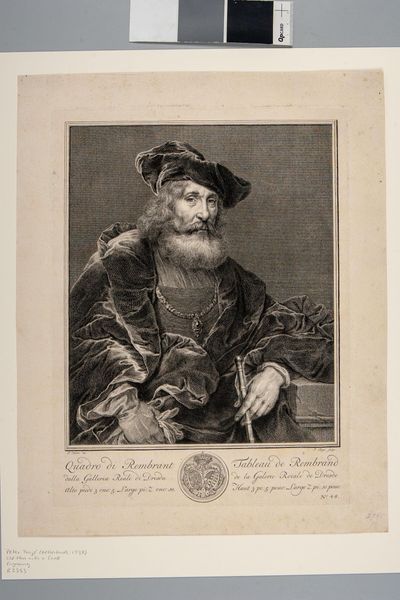
Dimensions: height 351 mm, width 251 mm
Copyright: Rijks Museum: Open Domain
Editor: This is William Pether's "King Uzziah afflicted with leprosy," an etching and engraving, sometime between 1741 and 1800. There’s something immediately unsettling about the portrait – his gaze is intense, and his hands seem almost pleading. What do you see in this piece? Curator: I see a potent depiction of power and vulnerability, inextricably linked. Consider the socio-political climate in which this was made; royalty was often presented as divinely ordained. But here, Uzziah, a biblical king, is stripped of his divine right by disease, a tangible consequence for defying religious law. How does this challenge the established narrative of leadership and authority? Editor: It feels like a criticism of the ruling class. Is Pether suggesting earthly power doesn't equal immunity from human suffering? Curator: Precisely! It reflects evolving societal attitudes towards those in power. Note the stark contrast between the opulent robes and Uzziah's very human, suffering face. It encourages a discourse about accountability. Consider too, the history of depicting disease; it often carried moral weight, a visible sign of sin or divine displeasure. Do you see this operating here? Editor: Absolutely. Leprosy serves as a physical manifestation of his transgression, not just a disease. Curator: Indeed. And what does it say that this intimate, flawed depiction of a leader is now on display, open to scrutiny? What kind of power dynamics are at play between the artwork, the viewer, and the history it represents? Editor: It’s fascinating to see how a historical artwork can still spark important questions about power, accountability, and representation. Curator: And that is exactly the power of art - to serve as a mirror reflecting our own socio-political realities, while inviting critical engagement.
Comments
No comments
Be the first to comment and join the conversation on the ultimate creative platform.
